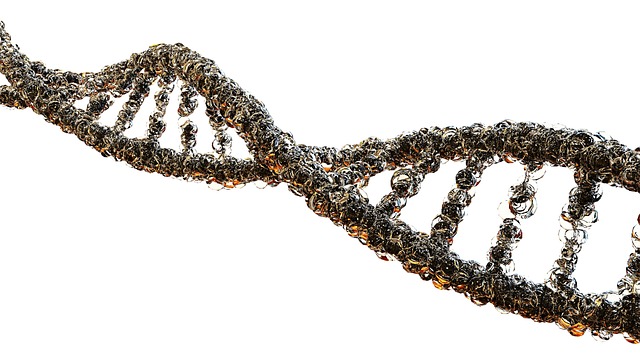Heredity refers to the transmission of traits or characteristics from one generation to the next through genetic information. Inheritance specifically refers to the process by which genetic information is passed down from parents to offspring.
What is Heredity?
(Photo by Ben White on Unsplash )

Heredity is the process by which characteristics are passed from one generation to the next. Heredity occurs when an organism inherits a trait from one of its parents. Inheritance is the process by which traits are passed from one generation to the next. Inheritance occurs when an organism inherits a trait from one of its parents.
What is Inheritance?
(Photo by Malin K. on Unsplash )

Inheritance is the process by which traits are passed from parents to their offspring. Heredity is the term used to describe the genetic information that is passed from one generation to the next. Inheritance occurs when an individual receives DNA from their parents that contains instructions for how to develop and function. This DNA can be passed down for many generations, and it is responsible for the similarities between parents and children, as well as the differences.
There are two main types of inheritance: autosomal inheritance and sex-linked inheritance. Autosomal inheritance refers to traits that are controlled by genes located on autosomes, which are chromosomes that do not determine gender. Sex-linked inheritance refers to traits that are controlled by genes located on sex chromosomes, which are chromosomes that determine gender.
Inheritance patterns can be predicted using pedigree analysis, which is a method of tracking the occurrence of a trait in a family over multiple generations. pedigree analysis can be used to identify different modes of inheritance, such as autosomal dominant, autosomal recessive, and X-linked recessive.
The Difference Between Heredity and Inheritance
Heredity and inheritance are related concepts in genetics, but they have slightly different meanings.
Heredity refers to the passing of traits or characteristics from one generation to the next. These traits can be physical or behavioral, and they are determined by the genetic material that is passed down from parents to offspring. Heredity is a broader concept that encompasses all the genetic information that is transmitted from one generation to the next.
Inheritance, on the other hand, specifically refers to the process by which genetic material is passed down from parents to offspring. This can happen through various mechanisms, such as sexual reproduction, asexual reproduction, or genetic engineering.
In other words, heredity refers to the transmission of genetic information, while inheritance specifically refers to the mechanism by which this information is passed down. While the two terms are often used interchangeably, they have slightly different meanings and refer to different aspects of genetics.
How Heredity and Inheritance Work Together
Heredity and inheritance are closely related concepts that describe how traits are passed down from one generation to the next. Heredity refers to the transmission of genetic information from parents to offspring, while inheritance describes the process by which traits are expressed and inherited by offspring.
Heredity and inheritance work together through the transmission of genetic material from parents to offspring. This genetic material is contained in the DNA molecules found in the nucleus of each cell. DNA contains the instructions for building and maintaining an organism, including information about physical and behavioral traits.
During sexual reproduction, the genetic material from both parents is combined to create a unique set of genetic information in the offspring. Each parent contributes half of their genetic material, which is randomly mixed together during the process of meiosis, resulting in the creation of a new, unique genetic code.
This new genetic code determines the physical and behavioral traits of the offspring, which can be influenced by both genetic and environmental factors. Some traits are controlled by a single gene, while others are influenced by multiple genes working together.
Inheritance occurs when these genetic traits are expressed in the offspring. Traits can be dominant or recessive, depending on whether they are expressed in the presence of other traits. For example, if a dominant trait is present, it will be expressed regardless of whether the other allele is dominant or recessive. However, if a recessive trait is present, it will only be expressed if both alleles are recessive.
Heredity and inheritance play a crucial role in the development of an organism, as they determine the physical and behavioral characteristics of an individual. By understanding how these processes work, scientists can gain insight into the underlying mechanisms of genetic disorders and explore new ways to treat or prevent them.
What is an example of inheritance in a family?
An example of inheritance in a family is the inheritance of a genetic disorder or disease. For instance, if a family member inherits a gene mutation that causes a genetic disorder like cystic fibrosis, there is a chance that the mutation will be passed down to their children. This is because genetic mutations can be passed down from one generation to the next through the process of inheritance.
Similarly, other traits such as eye color, height, and hair texture can also be inherited from one generation to the next. These traits are controlled by multiple genes and can be influenced by both genetic and environmental factors. For example, if both parents have brown eyes, there is a high chance that their children will also have brown eyes due to the dominant nature of the gene controlling eye color.
Inheritance can also refer to the passing down of traits or characteristics that are not necessarily genetic, but rather cultural or social. For example, family traditions, values, and beliefs can be inherited and passed down through generations.
What is an example of inheritance in humans?
When we think of inheritance, we often think of passing down physical traits from our parents, like hair color or height. However, inheritance is about more than just physical traits. It also includes the passing down of genetic information that determines things like eye color, blood type, and risk for certain diseases.
In humans, there are two main types of inheritance: autosomal and sex-linked. Autosomal inheritance refers to the passing down of genes on non-sex chromosomes (autosomes), while sex-linked inheritance refers to the passing down of genes on sex chromosomes (X and Y).
One example of autosomal inheritance is the ABO blood type system. This system has four blood types (A, B, AB, and O) that are determined by the presence or absence of certain antigens on red blood cells. The ABO blood type system is controlled by three alleles: IA, IB, and i. These alleles are found on chromosome 9 and are passed down from parent to child through meiosis (the process of cell division that produces gametes).
Another example of autosomal inheritance is polycystic kidney disease (PKD), which is a condition that causes multiple cysts to form in the kidneys. PKD is caused by mutations in two different genes: PKD1 and PKD2. These genes are found on different chromosomes (4 and 16), which means that they are not inherited together as a single unit.
What are the 5 types of heredity?
There are five types of heredity:
Dominant and Recessive Heredity: In this type of heredity, one trait is dominant and the other is recessive. For example, if a parent has brown hair and the other parent has blonde hair, their child will likely have brown hair.
Intermediate Heredity: In this type of heredity, both traits are partially expressed. For example, if a parent has brown hair and the other parent has blonde hair, their child may have lighter brown hair.
Codominance Heredity: In this type of heredity, both traits are fully expressed. For example, if a parent has brown hair and the other parent has blonde hair, their child may have streaked hair that is half brown and half blonde.
Multiple Alleles Heredity: In this type of heredity, there are more than two possible alleles for a trait. For example, if a parent has blue eyes and the other parent has green eyes, their child may have blue eyes or green eyes, or they may have hazel eyes (which is a mix of blue and green).
Mitosis Heredity: In this type of heredity, the cells divide to create new cells with identical DNA to the original cell. This is how identical twins are created – they come from the same egg that splits in two
What are the 7 patterns of inheritance?
The 7 patterns of inheritance describe the different ways in which genetic traits or disorders can be inherited. These patterns are as follows:
Autosomal dominant inheritance: This pattern occurs when a single copy of a dominant gene is enough to cause a genetic disorder or trait to be expressed. This means that if one parent has the gene, there is a 50% chance that their child will inherit the disorder.
Autosomal recessive inheritance: In this pattern, a child needs to inherit two copies of a recessive gene (one from each parent) to express a genetic disorder or trait. This means that if both parents are carriers of the gene, there is a 25% chance that their child will inherit the disorder.
X-linked dominant inheritance: This pattern occurs when a dominant gene is carried on the X chromosome. Females are more likely to inherit the disorder since they have two X chromosomes, while males only have one.
X-linked recessive inheritance: This pattern occurs when a recessive gene is carried on the X chromosome. Males are more likely to inherit the disorder since they only have one X chromosome, while females need to inherit two copies of the gene (one from each parent) to express the disorder.
Mitochondrial inheritance: This pattern is characterized by the inheritance of mitochondrial DNA, which is passed down from the mother to her offspring. This type of inheritance is associated with certain genetic disorders that affect the function of mitochondria.
Multifactorial inheritance: This pattern occurs when a combination of genetic and environmental factors contribute to the expression of a trait or disorder. For example, the risk of developing certain types of cancer or heart disease can be influenced by both genetic and lifestyle factors.
Genetic heterogeneity: This pattern occurs when different mutations in different genes can result in the same disorder. This can make it difficult to identify the specific genetic cause of a disorder.








